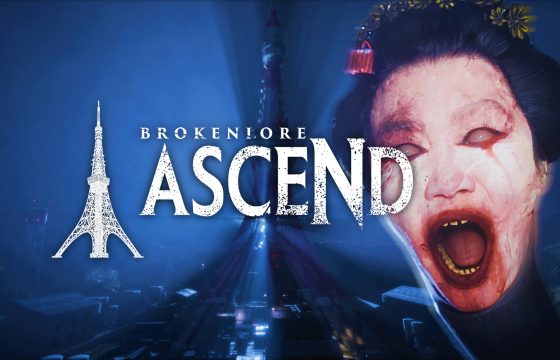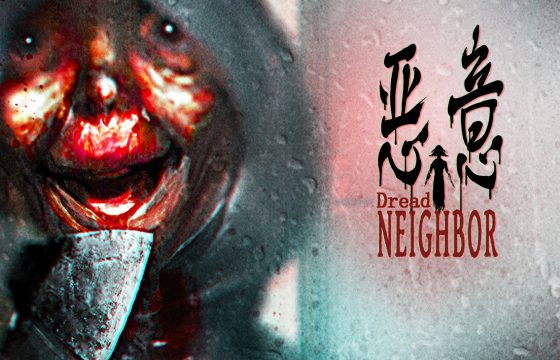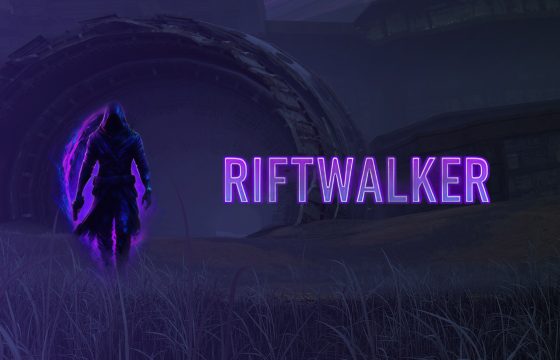Inspired by a historical event, Hell Clock traces the story of Pajeú and his fight against the underworld to save his soul, his people and his mentor.
Hell Clock surprised us since our pre-review. Its mechanics are not only explicitly derived from the Diablo series (especially 3), but it takes some interesting liberties.
Divided into 3 acts, we will find ourselves facing hordes of enemies until we meet the boss of the area as per the classic dungeon crawler. Hell Clock combines the roguelite element linked to level up, the purchase of skills with the drop. In addition, the game also adds a countdown timer which, once exhausted, will end the game.
This last element that works in its favor. Fairly small areas, many enemies and rather short runs help the replayability. Even its progression system, although strongly parametric, works once assimilated.
Despite everything, Hell Clock also brings with it the flaws and weaknesses of old-school dungeon crawlers. In fact, even if it softens some rough edges, some problems remain.
Let’s see together the strong and weak points of the Rogue Snail production.
A bloody story of revenge
The story of Hell Clock is loosely inspired by the events of the Canudos massacre, which occurred between 1986 and 1987.
In the State of Bahia, the religious community of Canudos had Antônio Conselheiro as its spiritual leader. Canudos rejected the authority of the newly formed Brazilian Republic. This resulted in 4 clashes where the small town resisted strenuously and routed the troops of the new Brazilian republic. Unfortunately, the fourth clash was fatal for Canudos and its inhabitants who were exterminated, with the city destroyed and now abandoned and erased from history. A dark page of the newborn Brazilian republic.
From this historical incipit Pajeú, the protagonist, will begin his quest. The topic covered is not light and is told in a rather raw way. Although the fictional story told is particularly linear, there will be no shortage of surprises.
During the 3 acts we will have some twists and in the third we will have an interesting one.
All this leads to a bittersweet moral that will justify the end game.

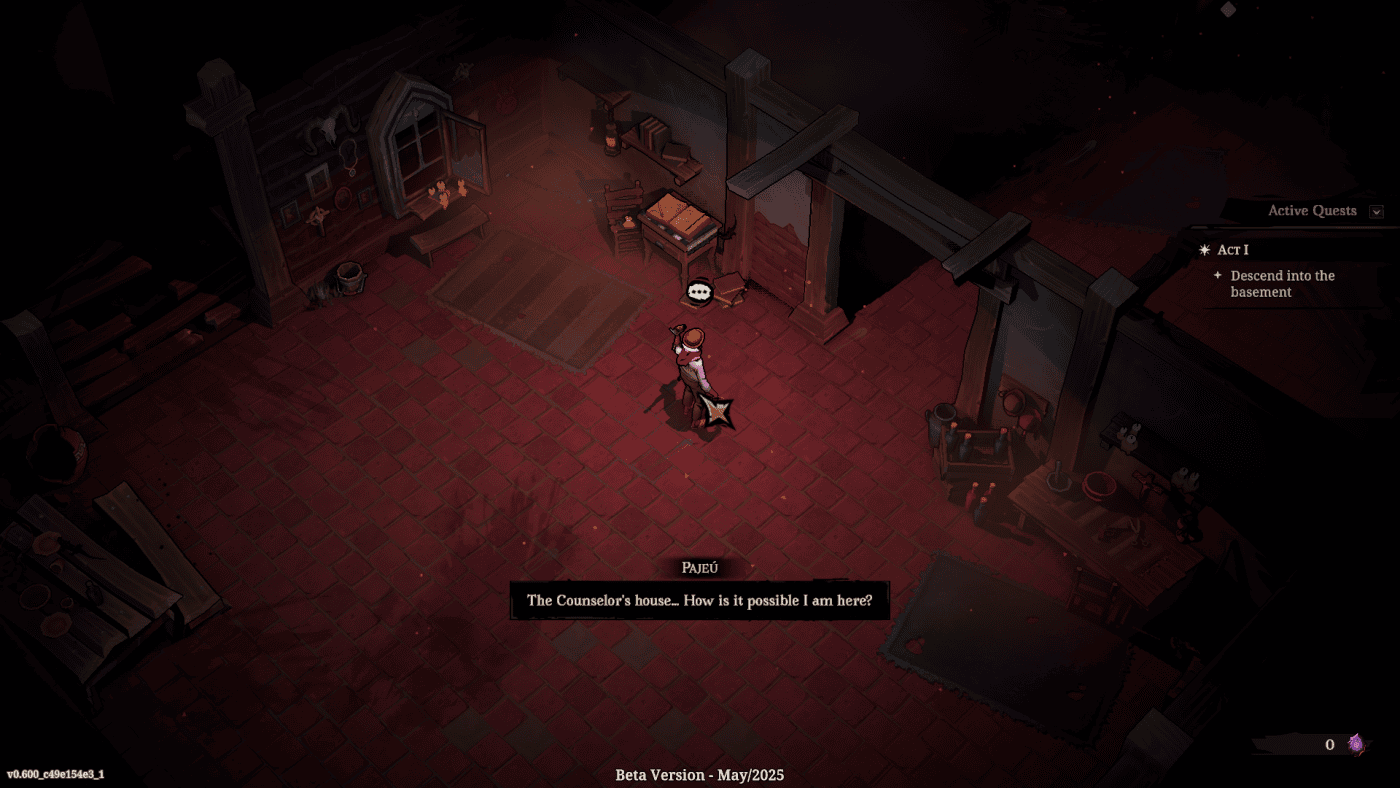
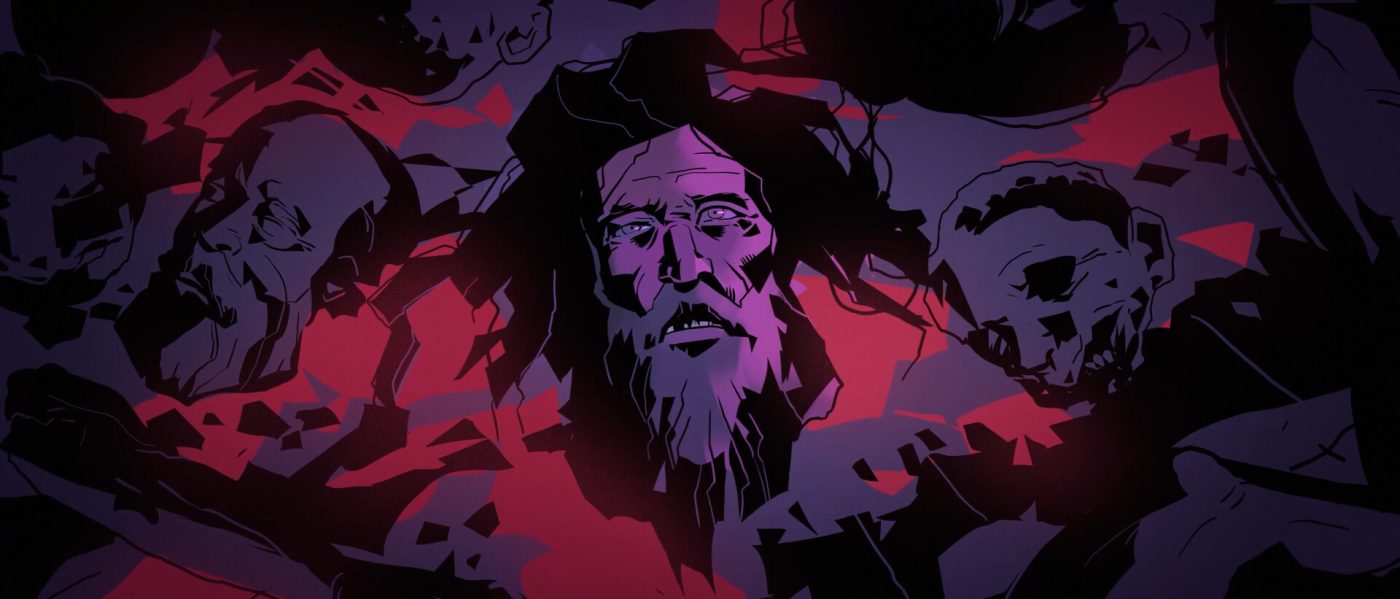
Acts, levels and design
The story is divided into 3 acts, which are punctuated by quests. Once a quest is completed, we will unlock a subsequent one until the act is finished.
Pajeú wakes up in front of the mentor’s destroyed house, which will become our hub. At the end of an act or after certain events, the base will expand. This allows us to improve the character’s equipment, relics and skills.
Once an act is completed from the hub a path will open with the entrance to the next one.
The acts are made up of various dungeons/biomes, divided into floors to traverse. Our goal is to both eliminate the hordes of enemies and find the portal that takes us to the next floor.
The floors have good stylistic diversity and are aesthetically pleasing. Halfway through the dungeon we will face an event with waves of enemies plus a mini boss. Each dungeon ends with a peculiar boss fight, often followed and preceded by a well-curated cutscene.
The level design, although linear, is very faithful to the classic dungeon crawler style. It does not exceed in complexity and secrets although it allows simple deviations that often hide rewards.
There is no shortage of references to Diablo such as the marauding goblin who runs away once attacked and the chests. Not to mention the Shrines with the random purification event and the elite packs.
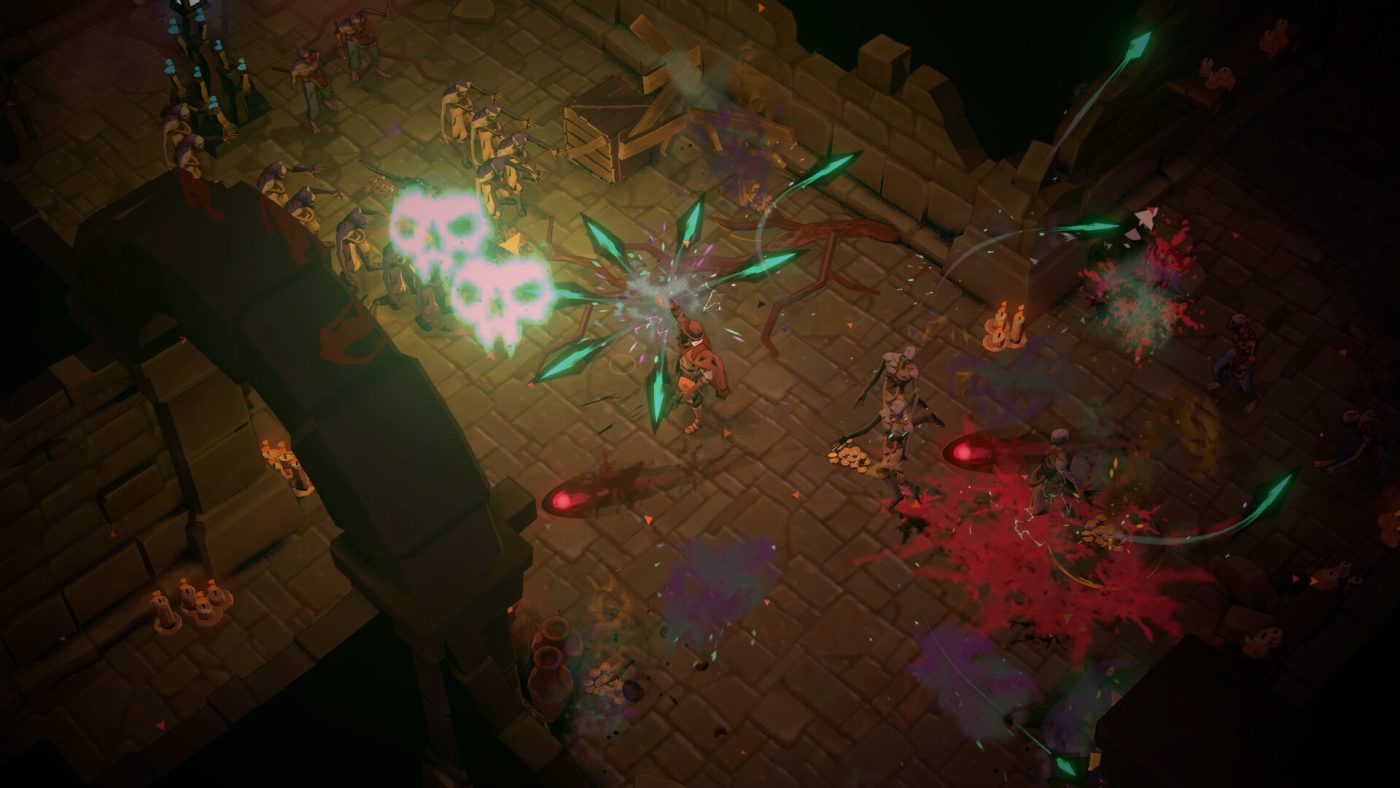

Quotes and authorial freedom
As much as Hell Clock is heavily inspired by Diablo-like dungeon crawlers, it takes some license. These freedoms are functional to the running timer, so as to make the run frenetic and fast. In fact, the build-up that can be done is only before starting the run.
We divide the drops into consumables that can be spent in the hub and equipment, relics and trinkets. The latter and also the skill upgrades are divided into Tiers of increasing quality.
In the game we have no inventory and everything is collected automatically.
Trinkets include characteristics as diverse as fury, vigor, agility, and spirit. If the drop is of a higher tier, it replaces the weaker one automatically.
Equipment, on the other hand, given that it has random variables, leaves the choice of replacement to the player. Obviously this depends on the build and the synergies one wants to achieve.
Relics, even if collected automatically, are not immediately equipped. Only by returning to the Hub can we examine. They also have a main and not random skill plus other random attributes.
Relics, equipment and passive upgrades can be purchased during the run. It all depends on whether we find the statues that sell them and whether we have the necessary money.
Consumables such as soulstones are used to upgrade or purchase improvements to the central hub.
Money is used during the run to purchase relics, equipment and passive upgrades.
Progression, synergies and passive abilities
How do you progress in Hell Clock? definitely after every run.
We don’t have an inventory during the run but even in the central hub things are not so obvious. Equipment can be changed but not kept, so with each choice we will cancel the previous choice. Relics are the only ones that can be accumulated and then chosen with a Diablo-like system.
In the central hub we can evaluate their value and understand if they are right for our build. The progression is in the choice of passive skills from the skill bell, which really makes a difference in the gameplay. Trinkets are lost after each run. The only thing we have left are consumables to spend.
During the run we increase in level. This allows us to acquire improvements for equipped skills.
Opening a parenthesis, the skills are in good numbers and not all of them can be used immediately. By progressing with the acts and the story we can unlock them and then strengthen them thanks to the bell. The relic enhancement mechanic is also important.
In the final part of the game we unlock the constellations. They are also fundamental in the build of our character.
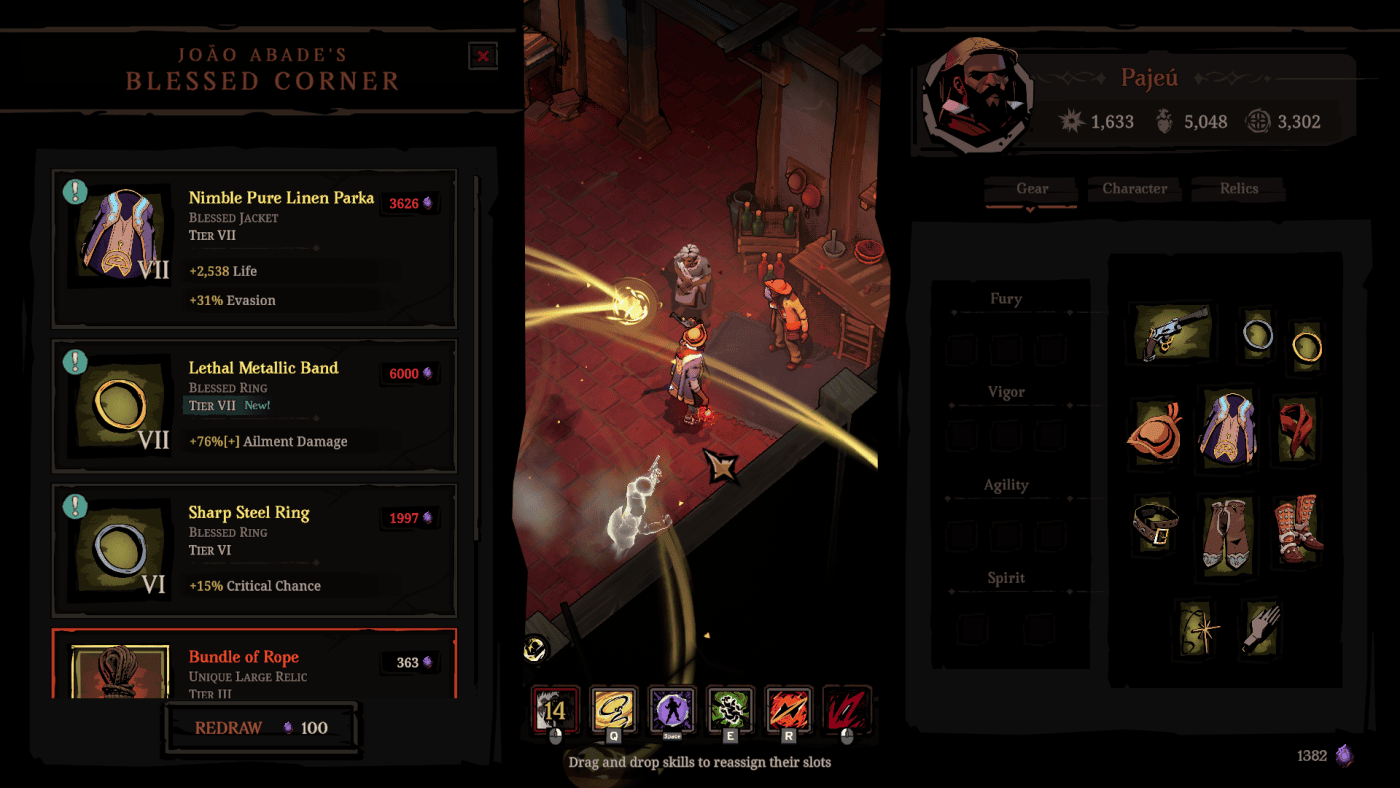
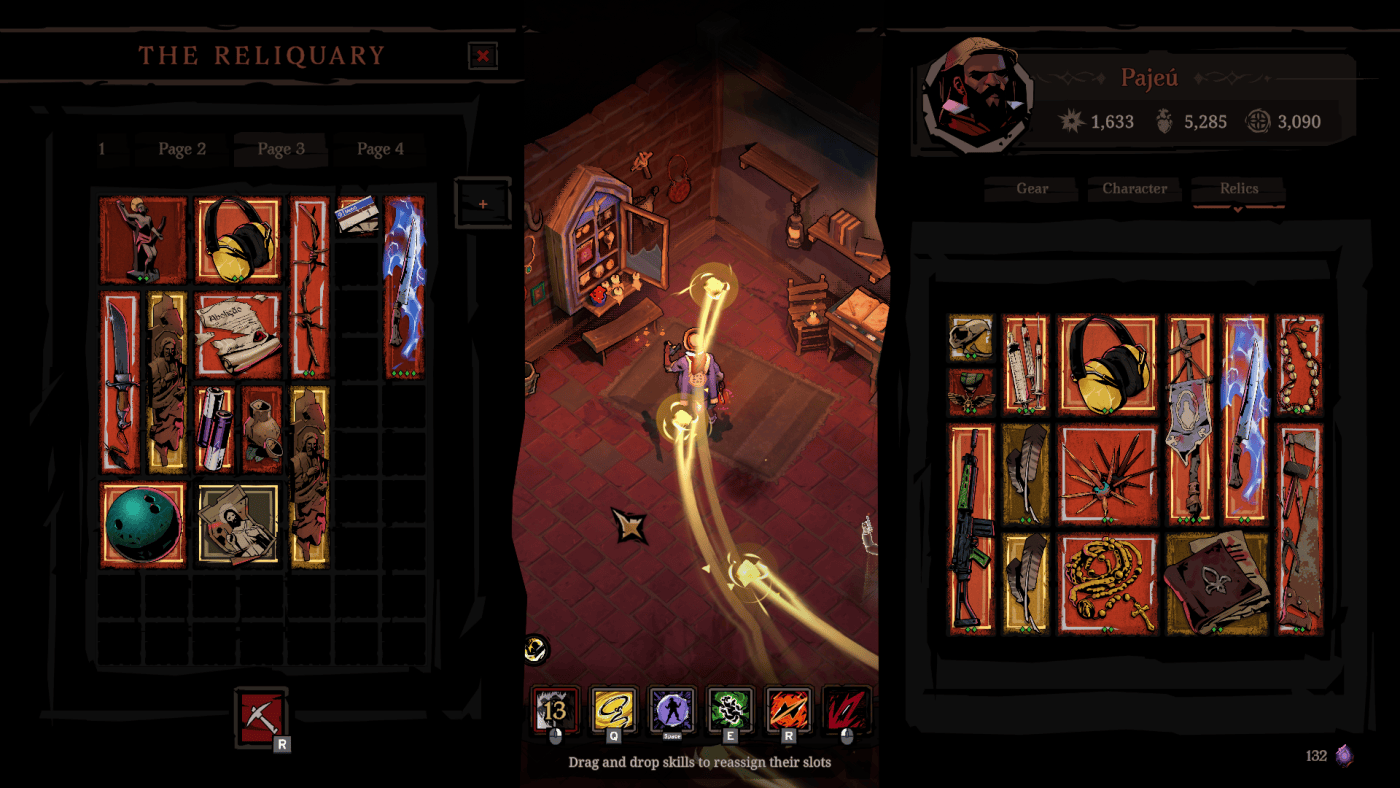
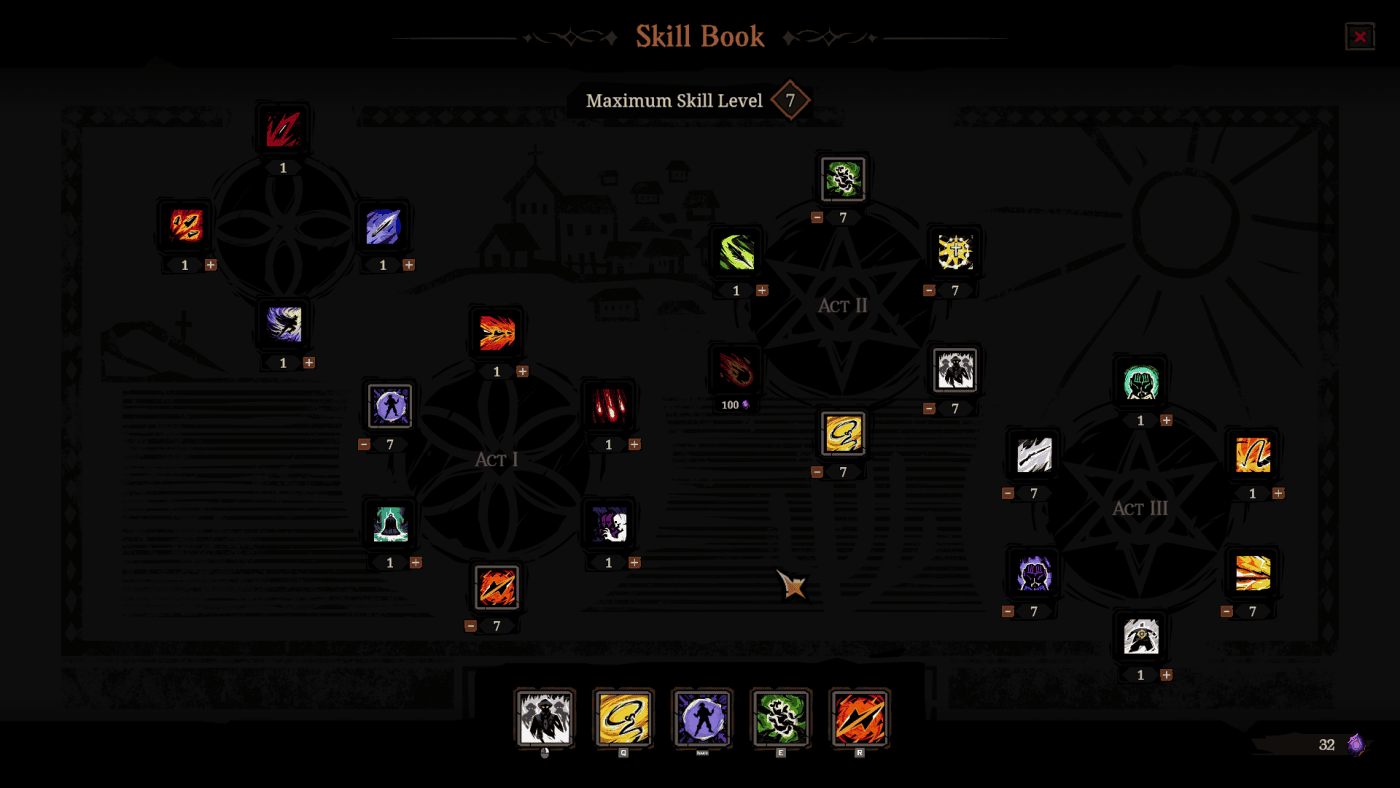
End game and wise choices
A recent patch has averted Hell Clock from a serious problem.
In fact, once the story was completed, you moved on to an Ascension Mode which erased all the progress made by the character. Although the mode is interesting because it provides penalties to choose for the run, the loss of all progress is objectively too much.
Fortunately, the developers have found a solution: changing the World Tier. In addition to the normal mode, there is the Abyss and Oblivion Tier. Each with specific mechanics and difficulties.
Ascension mode has not been removed, but can be played in a new save without compromising the previous one.
The Hardcore and Relax options are also interesting. In the first we will lose the character and all progress once defeated. In the second the countdown timer is removed for a more peaceful run. Frankly, I don’t recommend it because the experience would lose a lot of its charm.
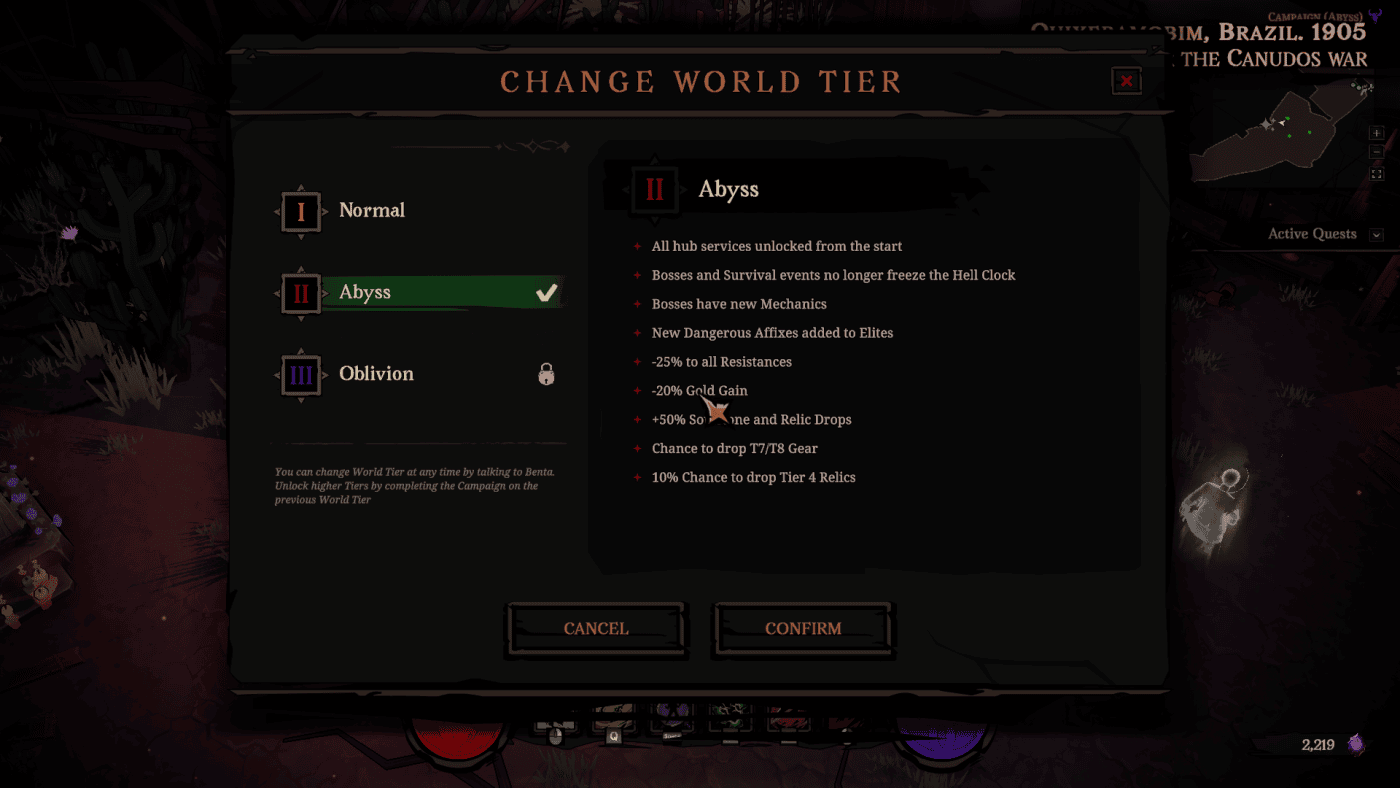
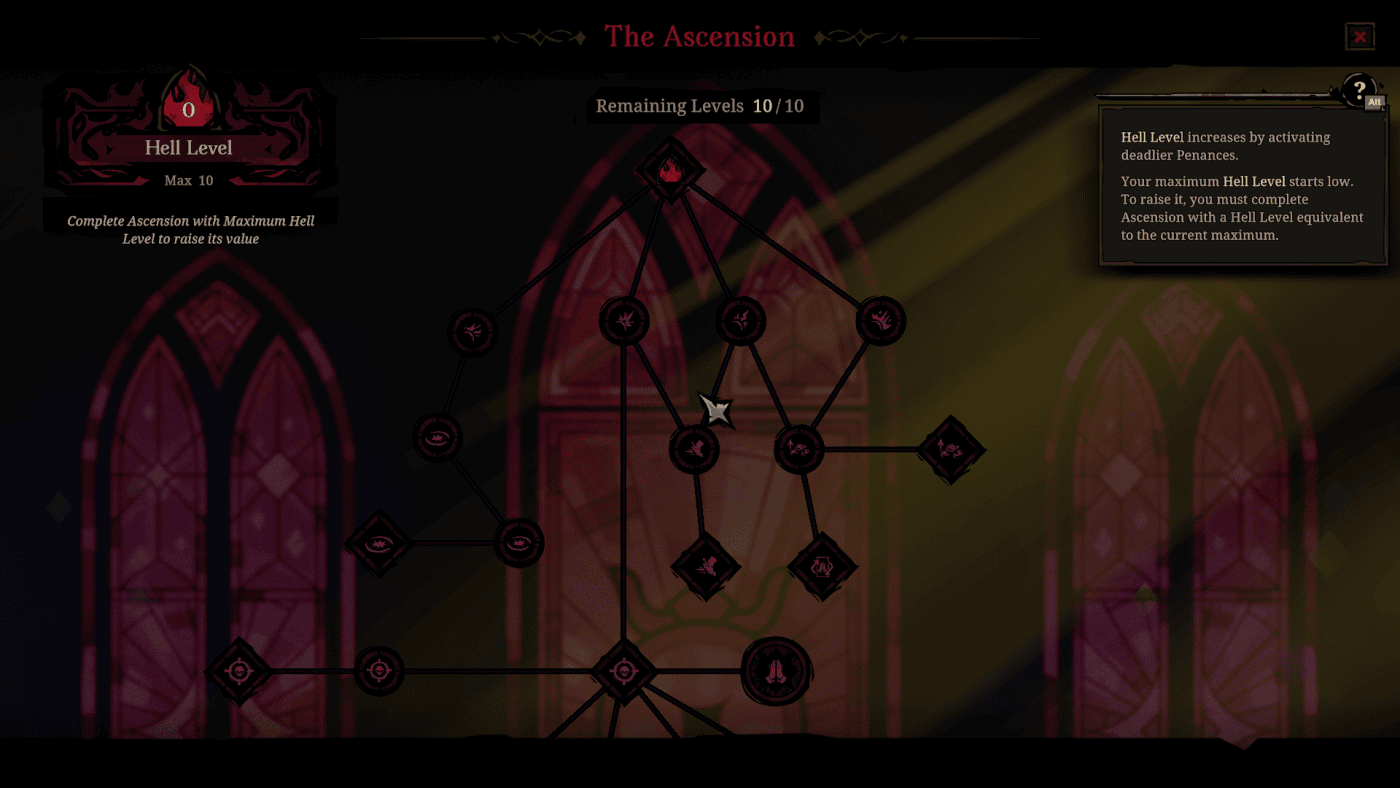

Pro and Cons of Hell Clock
Despite the adrenaline and fun, Hell Clock carries with it some of the chronic flaws of Diablo-like dungeon crawlers. The developers intelligently cut off some of these with the idea of the countdown timer and quick drop management. This makes the run streamlined and tactical, not leading the player to a frustrating loop looking for the right drop.
Regarding this, unfortunately the relics have the same flaw as the first end game of Diablo 3: the randomness of the characteristics. It’s not pleasant to find the right relic for the build but discover that it has random attributes that don’t enhance it.
A note should be made on the technical side. When there are many opponents and many numbers on screen the game engine suffers a lot, lagging and stuttering. Sometimes it can compromise the experience and be frustrating.
Net of everything, Hell Clock is still a good, adrenaline-filled title with developers who listen to the community and continue to work on the title.
They also presented a very detailed roadmap that features improvements and also a DLC.
My two cents
Hell Clock is certainly a valid product, made with care and respect.
The dopamine and satisfaction in improving the character is palpable run after run. The feeling of progress is good and worthy of a high-level Diablo-like. There aren’t actually many builds to “break” the game and an experienced player discovers them quite early.
Anyway studying the synergies between relics and abilities is fascinating and encourages you to invest time and resources.
Despite the adrenaline and fun, Hell Clock carries with it some of the chronic flaws of Diablo-like dungeon crawlers. The developers intelligently stemmed some of these with the idea of the timer and quick drop management. This makes the run streamlined and tactical, not leading the player to a frustrating loop looking for the right drop.
Furthermore, mention should be made of some technical difficulties in levels that are too “full” of opponents and numbers.
In summary, the randomness of the drop and the strong escalation of the parameters are both a curse and a delight for this title. Also considering the few relics available at the moment. So if you’re looking for a fast-paced, adrenaline-filled, satisfying game and can put up with some technical issues, Hell Clock is a great game to try.
Hell Clock
PRO
- Good mature story
- Well reinterpreted gameplay mechanics
- Fast, adrenalinic and satisfying
- Smart end game development
- Satisfying sense of progress
CON
- Technical issues on end game floors
- Too much randomness on relics drops
- Only few effective builds and low relics droprate
- Parametric development is curse and delight






